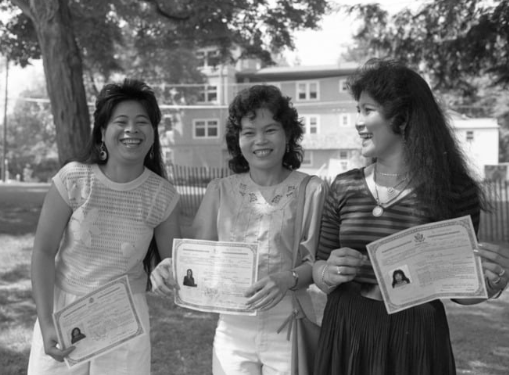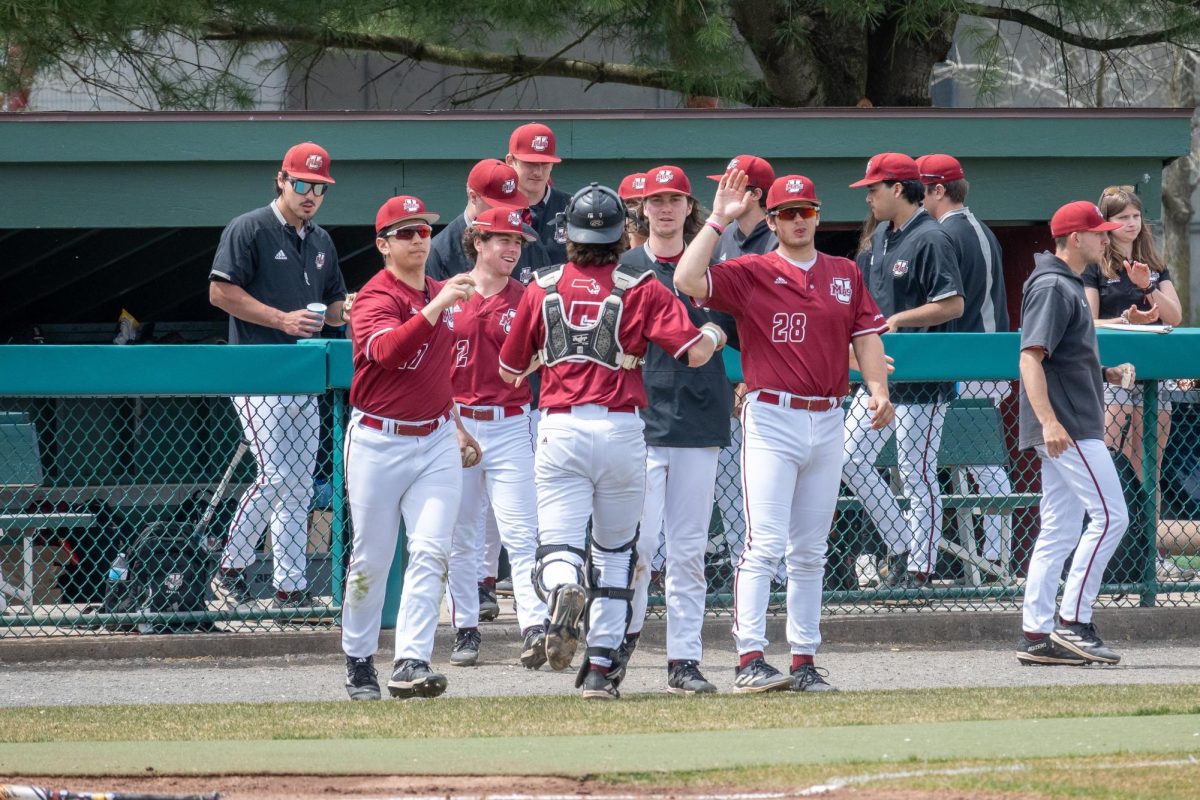The Cambodians in Amherst exhibit, presented by the Amherst Historical Society will open on May 11. The exhibit will serve to examine the history of the survivors of the Khmer Rouge genocide in Cambodia who took refuge and resettled in Amherst in the early 1980s.
George Naughton, a member of the Amherst Historical Society and creator of History Bites, was asked by Yanna Ok, the director of programming and digital media at Amherst Media, to create an exhibit to educate Amherst residents on the diverse history of the town. According to Ok, this exhibit matches the goals of the Amherst Historical Society, which are to “collect, preserve, and display an extensive variety of objects that give residents and visitors an appreciation of the many aspects of life in Amherst.”
In addition to social media coverage, Ok focused on graphic design for the displays and recording and editing the oral histories for the exhibit. She was also a key figure in training Amherst Regional High School students Moniha Krouch and Pavan Seiha, while assigning Amherst Media interns tasks to complete the project.
“We really wanted to get the youth involved so they could have some sort of attachment to this major history of Cambodians coming into Amherst,” said Ok.
Ok was inspired by Anika Lopes, creator of Ancestral Bridges. Lopes, whose family includes several generations of Black and afro-Indigenous residents of Amherst, had created one of the first exhibits at the Amherst Historical Society that was not of European descent.
Ok said that when the Cambodian exhibit launches, “it’s going to inspire other communities of color [as Lopes had for the new exhibit] to want to tell their story, and I heard it’s already happening. I think the Puerto Rican community actually reached out to the Amherst Historical Society and were asking how they can get involved for future projects.”
When the Amherst Historical Society officially partnered with the Cambodian community, an increase in resources and grant money helped the community begin the project. Liz Larson, the interim executive director at the Amherst Business Improvement District (BID), and Paul Bockelman, the chief executive officer of the town of Amherst, were large influences in writing grants for the community.
According to Ok, the grants help “tell the story of this area. …With Amherst Media’s [grant money], [the job was to record] the oral histories and train students to come with me in order to interview refugees.”
Grant money has funded Amherst-Cambodian efforts since the beginning of the 1990s. Joan Snowdon, a committee member of the Cambodians in Amherst exhibit, was a middle and high school ESL (English as a Second Language) teacher in the Amherst Regional School District. She said that the grant money was shared within the programs for refugee students.
“We’re a close community in the schools,” Snowdon said. While she is currently retired, she recalled that “there’s a lot of communication between the ESL teachers in the entire district. …I had worked with bilingual educators [in the] ESL/TBE (English as a Second Language/ Transitional Bilingual Education) [program]. There were such a large number of Khmer speakers who all arrived [from refugee camps] at the same time [and] the district was legally bound to establish a bilingual education program. It was for the number of years it took for the students to acquire English fluency, and also to maintain the heritage language.”
Snowdon has been focusing on the research of Cambodian history in Amherst. Compared to the other parts of history in Amherst, such as the written history of the Dickinson family, “this is social history. People have written some audio biographical pieces about their experience of coming to Amherst, there have been some interviews done through Dr. Richard Chu at UMass… but there’s nothing written down.”
Along with gathering photos from the collection of people on the committee and community members, Mick O’Connor, Rebecca Fricke, Seiha Krouch, Lauren Roum, Sokhen Mao, Snowdon and Ok were all involved in helping gather contacts that told the correct history of Cambodians coming into Amherst.
“We tried our best to represent the history,” said Ok. “We [conducted] research all the way up until the end, because there’s just so much to tell. So, but hopefully, we can continue to tell more stories in the future and maybe hone into specific stories.”
The exhibit itself focuses on how the refugees from Cambodia escaped from the Khmer Rouge, whose strict ideological beliefs were to turn Cambodia into a perfect pure agrarian society.
“They were influenced by Maoism… [and were] going to get rid of all Western influence,” Snowdon said. “So, by decolonizing, as we’d say, today, Cambodia genocide, they went crazy with it. …Anyone with a professional degree was considered impure [and] considered suspicious and was actually killed for that.”
The Khmer (pronounced kuh-migh) Rouge had focused on separating children from their parents. For this reason, the first groups of refugees of mainly children and teenagers trying to escape the labor camps of the Rogue entered Amherst. The task for the Amherst teachers, which Snowdon participated in, focused on, “how do we help these children or teenagers, in my case learn when they haven’t been in school for a really long time? Especially the little ones that weren’t used to school?”
“I feel like the Khmer Rouge often gets forgotten,” said Ok. “It was a time in history that happened all at the same time as the Vietnam War. …Sometimes, the Khmer Rouge gets overlooked and people forget that a third of the population was basically murdered by their own people. [The Rady Mom bill] requires history teachers to teach [the subject].”
With the relevance of the genocide, Ok said that a large part of the exhibit is to remember and recognize the Amherst community members who were involved with supporting and bringing Cambodians to Amherst.
“A lot of people don’t know and don’t remember that,” Ok said. “[The exhibit is] going to open [people’s] eyes to see the involvement of how many people there were from church groups, to the high school, middle school, colleges and health department and town.”
Kalina Kornacki can be reached at [email protected].




















Dana Smith • May 9, 2024 at 3:45 am
This is an excellent article. I remember returning to UMass in 1984 to finish my BA and was seeing the influences of the new refugees in the Amherst area. By then, there were also other refugees from the around the Commonwealth who were beginning to matriculate at the university. These seemed to have been folks who had arrived in the late ‘70s and early ‘80s from Southeast Asia and whose families had resettled in areas like Lawerence and Lowell.
The Cape’s Brazilian and Jamaican communities seemed to be experiencing similar patterns of settlement and influence in the community over the past 20 or so years. Their stories are just beginning to emerge. However, the reasons for their departures and arrivals likely were not as grave as those originally from Southeast Asia.
This is important stuff to preserve and remember! Nice job.
Dana Smith, UM87